Winter on the Coast of Montenegro
So, my winter vacation was uninspiring to say the least. I did manage to get a lot of painting done at home, but it was really too cold and rainy to experience much of Montenegro outside the concrete barricades of my apartment cell. I did, however, manage to venture to the coast on a couple of the rare sunny days. here are pictures of my excursions to Budva and Ulcinj:
The dalmatian Coast, which includes the Croatian and Montenegrin coastlines, has a long and colorful history. After towns were established along it by both the Greeks and Romans in ancient times (Dalmatia is the name from Roman times) the area came under Craot domination in the Middle Ages until being fought over by both the Hungarian and Venician Empires. As a result, the walled cities along the coast (of which Dubrovnik is the most famous, though certainly not the only example) boast architectural remnants from many eras. Cars are not allowed in these little citadels, and thus exploring them is like walking cobbled streets through time. Ironically, here in tiny Montenegro, despite the proximity of the mountains and the Serbian culture predominant in them, there is very little in common between the culture of the coast and the interior. The Dalmatian coast is a slice of cross-cultural uniqueness in an already diversified and complex region.
BUDVA
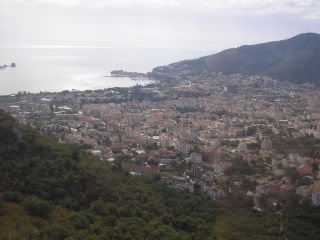
This is the view of Budva from the mountain ridge above it. One doesn't drive into Budva so much as fall into it.
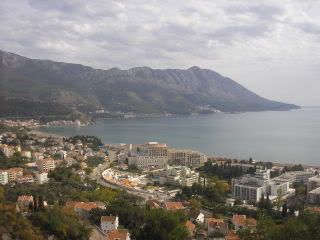
Coming closer.
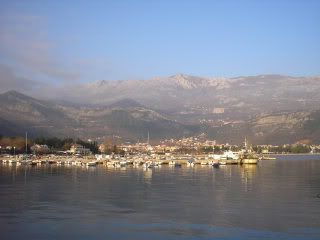
The bay supports a thriving fishing industry.
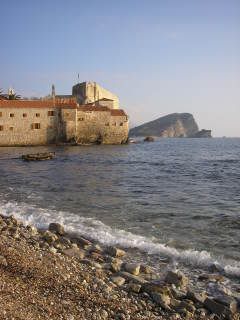
The Old Town's fortified walls, with a relaxing beach beside it. Perfect place for a slow drink on a lazy day.
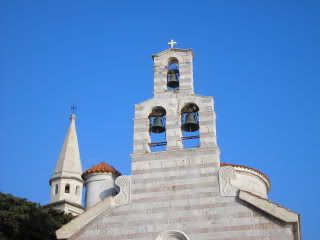
A church within the Old Town.
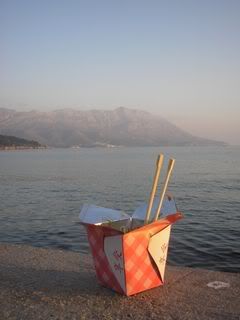
Well, perhaps not typical of Dalmatian culture, but something I was excited to find in Budva: Chinese Food! In an otherwise meat-dominated Montenegro, something as exquisite as stir-fried veggies is really special. Apparently, during the war-torn days of the 90's, China was one of the few countries that kept an open relationship with the former Yugoslavia. Hence, a number of Chinese came to the region. Not surprisingly, many opened up shop on the coast.
ULCINJ
Ulicinj, in addition to the cultural heritage shared along the Dalmatian coast, also boasts two other sources of cultural influence. First, Ulcinj is close to Albania and as such has a very Albanian feel to it. The spires of Mosques arise along the town's horizon, and the Ottoman influence (Ulcinj was one of the few parts of now Montenegro to have been subsumed under Ottoman rule) can still be felt. Second, even up until 1900, Ulcinj served as a base of operations for a gang of Adriatic Pirates. There is a rumor that they even imprsioned Cervantes there for five years, and that some of the characters in Don Quixote are derived from people he knew in Ulcinj. So, "Argh!", y'know, except that these pirates were mostly involved in the slave trade, so, "boo."
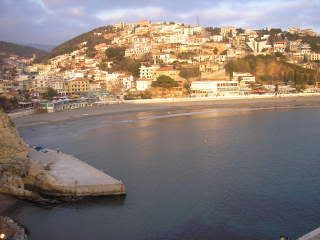
The town of Ulcinj along its central beach.
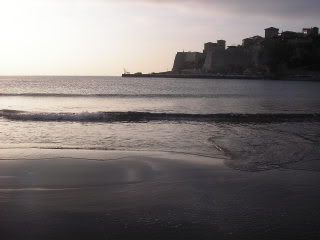
Ulcinj's Old Town
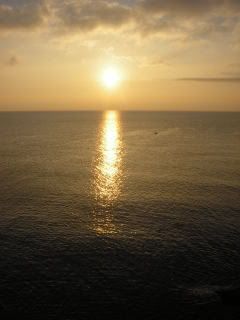
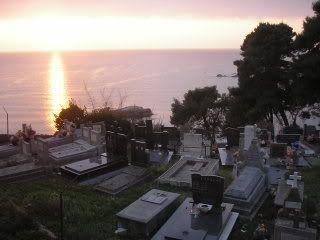
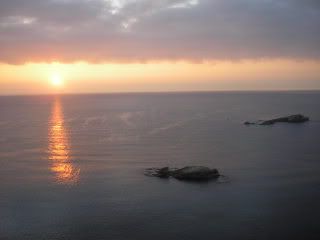
Views of sunset from the walls of the Old Town's fort. Sadly, this was the weekend I had heard about the passing of my grandfather, John Elwood Lamphear, Sr. My melancholy clearly translated into my photographs that day. There is something about staring across the sea into thoughts about mortality and those who have passed beyond the furthest horizon. Gran, I love you, and you will be missed.
